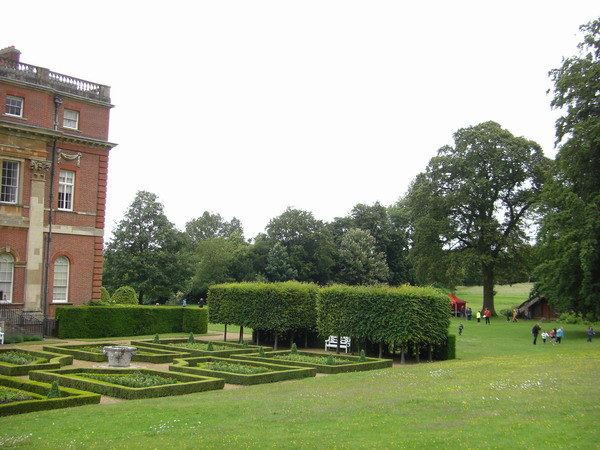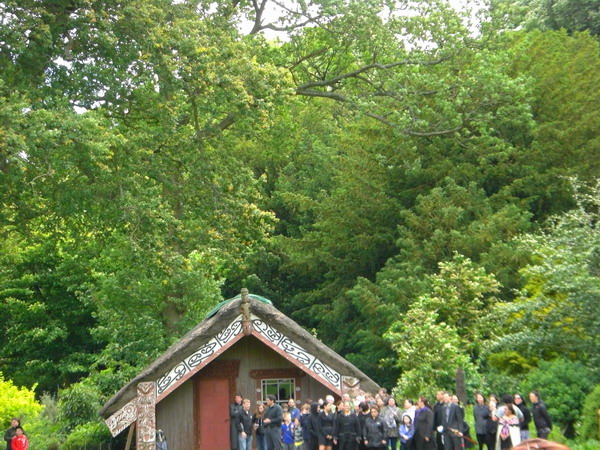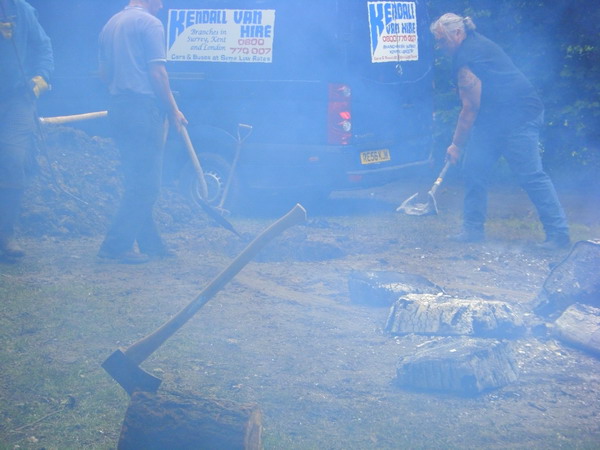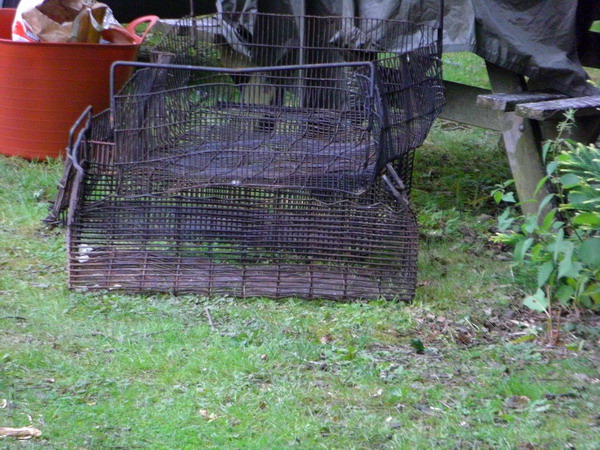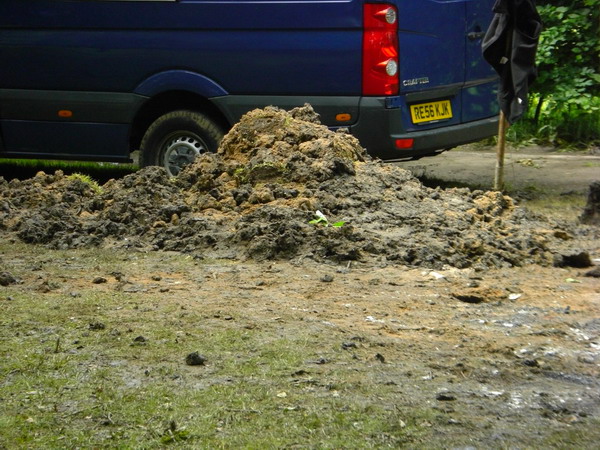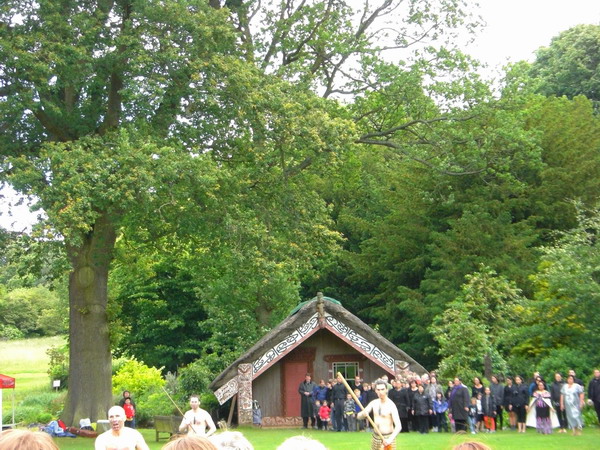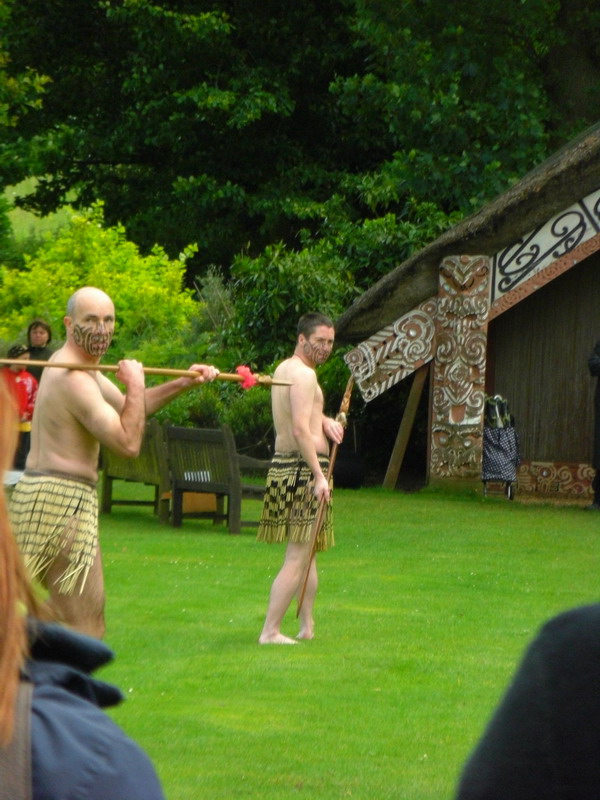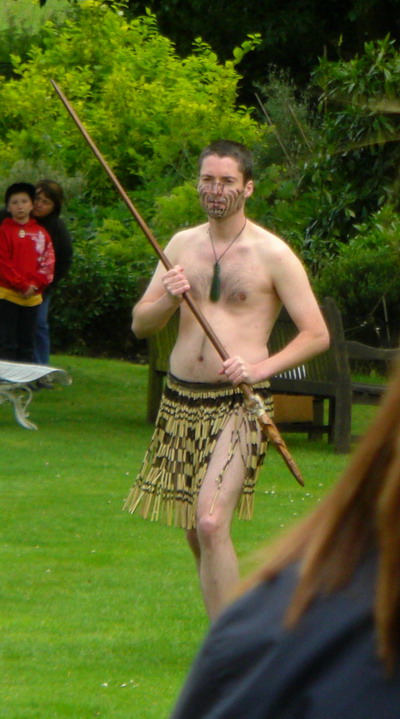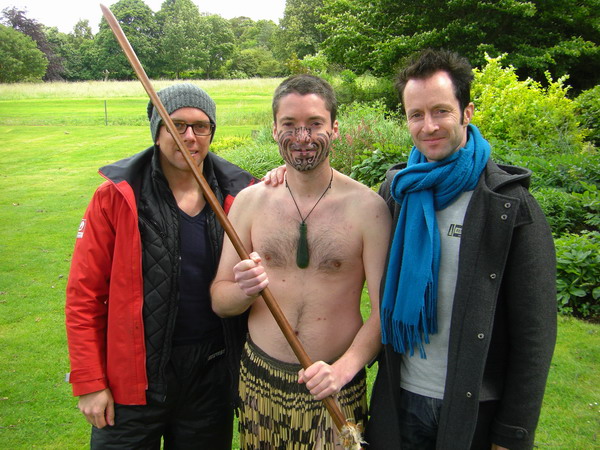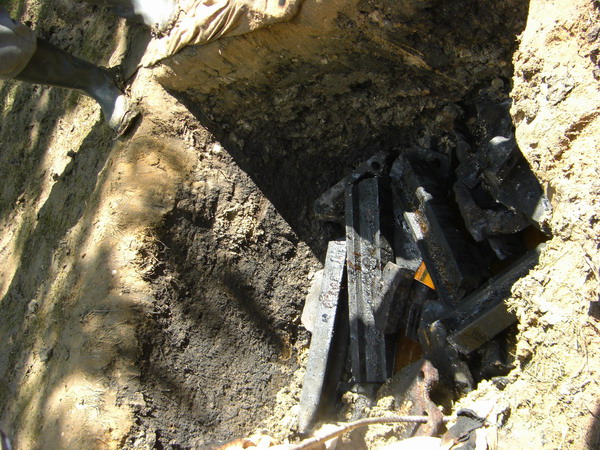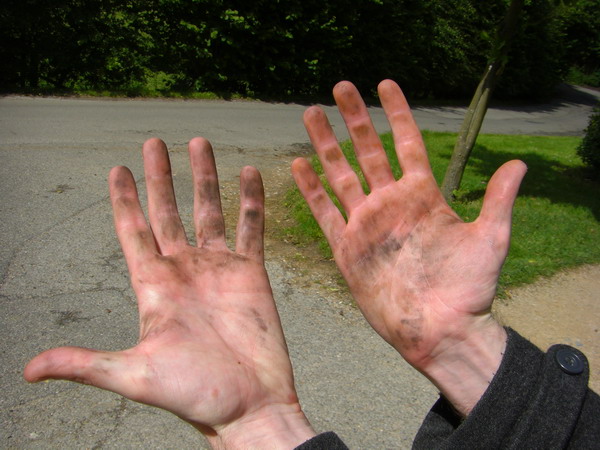Hangi
A few weeks back I went to my first hangi (pronounced hung-ee). Considering how many years I’ve lived in New Zealand, it’s an odd thing to come all the way to London to experience, but life, she is a funny mistress, yes?
So anyway, nice and early one Saturday we headed out to the marae (mah-r-eye):
I jest, I jest. That’s not a marae. Hell no. That’s Clandon Hall, at Clandon Park, just outside London. The marae is here:
You can see it off to the right. It’s one of only three maraes outside of New Zealand. So, really quite a big deal. To give you some perspective – the New Zealand High Commissioner turned up for the hangi. So, really quite a big deal.
Here’s the start of the powhiri (poe-fih-ree), where the locals welcome you onto the marae – but wait, wait, I’m getting ahead of myself. The hangi (which, after all, is why we’re here) starts with one of these:
It’s a little hard to see – but when that fire started (several hours before the cooking kicked off) it was about five or six feet high.
The trick with the fire is this. You build a massive fire at about six am in the morning. In the middle of the fire you put big hunks of iron (eg chopped up bits of railway). So, the fire isn’t to cook the food, but rather, it just heats up the irons. Way back before railways, obviously they would have just used rocks, but iron holds the heat better.
After the fire has burnt down sufficiently, you rake the fire with long handled rakes, and pull out the irons.
There’s a real art here – if you don’t let the fire burn long enough, the irons won’t be hot enough to cook the food properly. Luckily, the guy with the gray hair there has been doing hangis weekly for 13 or 14 years, so he has a ton of experience.
While the fire is burning, you dig a pit – about the size of a grave, although not quite as deep (you do, after all, want to be able to get the food out of it afterwards, unlike, uhh, graves).
It’s hot, tiring work.
You can see the fire has been raked apart pretty thoroughly by this point. It’s still damn hot. Even at this stage you wouldn’t want to stand within 10 feet of it.
After the irons are put in the ground, the food is placed into baskets.
There’s a very specific order the pits are lined.
First of all the irons. Then pork, chicken, beef, vegetables (carrots, potatoes, sweet potatoes), then layers of hessian (burlap) on top (to keep the dirt out).
The order is very simply so that the foods you have to be the most careful about cooking properly are the closest to the heat. Makes perfect sense.
So anyway, once the food is in there, the entire thing is covered over.
Yep, lunch is under there somewhere. This is what lead me to joke about the entire thing being “mud food” (although really, it tasted nothing like that – plus, hello, they’re not idiots, there’s exactly zero interaction between any dirt & the food itself).
While this was all sitting around under ground was happening, we headed back to the marae.
The way the powhiri works, it starts with a challenge. Essentially, the warriors from the marae come out and scare the shit out of you. The thing to remember is – they’re holding weapons that are designed to kill with a single strike. Those things do serious damage.
The whole thing is intentionally intimidating as all hell.
Interestingly, in terms of the people coming onto the marae, the women are in front. Now, I don’t speak Māori (moh-ree -sounds like ‘mouldy’, without the ‘d’) – but the tradeoff here seems to be – we offer our peaceful intentions by putting the most vulnerable people in the front (women & children) and they show they’re fully capable of protecting their marae.
Once the challenge is done, they put a small branch off a tree onto the ground as peace offering.
However, they’re still all business. Even as they’re stepping back to the marae, they keep eye contact:
Did you figure out which one was my bro? Welllllll.. I wouldn’t want to embarrass him.
Ok, ok, I probably would:
Yes, he’s trained. No, I wouldn’t want to mess with him while he’s holding it.
Ok, so I do have his permission to post this. Actual conversation:
me: Doing a blog post about the hangi. You ok if I post a pic of you in full gear, face paint, grass skirt etc?
him: Why not, it’s not like I have any manliness left, anyway.
me: Dude. You’re holding a stick capable of killing someone with a single blow. AND you know how to use it. That’s fucking manly.
him: Tell that to the Scots. They’ve been accused of wearing dresses for centuries.
me: They’ve also been head butting anyone who gave them shit, for centuries.
(As an ironic side note, he’s Scottish, but you can see why I love him so).
After the challenge and retreat, there are a bunch of speeches, songs and even poetry. It’s all very cool, very welcoming, and really quite entertaining. There was also a bunch of demonstrations of the Māori martial art my brother trains in.
Eventually, after four hours or so – again, utterly guessed by the guy running the hangi (get it wrong & you’ll find either raw or dried out food – and you can’t bury it again once you do, all the heat escapes), they dig it up from under the ground:
More hot, sweaty work – but utterly fascinating to watch.
Oh and look, here are those irons I was telling you about:
Once the baskets are brought up on long poles, they’re loaded into a van:
After all – it’s that or carry these super heavy baskets for half a kilometre to where everybody is waiting. Might as well use some modern conveniences (For example, I’m a big fan – as were the guys running the hangi – of beer-in-a-can).
The baskets themselves still required some manly heaving to get to their desired location:
I helped with a couple of the baskets. Ho ho, no, really. Here’s the proof:
Those are my hands. Honest! Look, it’s even my jacket. Ohhh, ok, fine, believe whatever you want.
So after all this digging, burning, heating, covering, uncovering and carrying, what did we end up with? This:
The chicken was a little (but not ridiculously) dry – I’ve certainly had much worse. The pork was utterly delicious, as was the potato, carrot and stuffing. The whole thing was quite scrumptiously smokey.
Oh, and that seemingly small pit in the ground? Fed about 150 people, with plenty for all.
A perfectly delicous ending to a thoroughly educational day.

